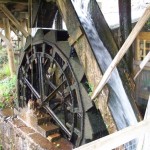
Note the unique display of three V-bombers in the Cold War hall. Admission is free, but there is a charge for car parking. Visitors are expected to ‘check in’ via the visitor centre building.
I revisited in 2023.













Category: Museum
Museums and collections
National Maritime Museum, Falmouth, Cornwall
The Museum is housed in a modern purpose-built building on the waterside in Falmouth. Internally it is divided into a number of “zones” containing permanent or temporary exhibitions. Besides what’s on display, there are large archives and reserve collections. Unsurprisingly, the museum contains quite a lot of boats, and some more small craft of historic interest are moored at a pontoon outside. There is also a glass-walled tidal room in the basement when at the right state of tide one can see fish outside. There is a section of Cornish-related materials.
There is plenty to look at, though it can be a challenge to find one’s way around or, for instance, locate the walkway to the external pontoon. I remember the basement where I tried to photograph some fish through the glass wall. A museum visit can occupy several hours.
Parking nearby can be expensive. However if you park at the Ponsharden park + ride, you can take the “Park and Float” = parking + a boat trip to the quay near the Maritime Museum, qualifying you for discounted entry.
Also in Falmouth: Pendennis Castle.
Kelvedon Hatch Bunker, Essex
The Bunker was built in the 1950’s originally as a hardened control centre for RAF Fighter Command, then used briefly as a civil defence centre, then as an emergency regional government site. By the 1990’s the Government decided that the threat of nuclear war had receded, and the mothballed bunker was sold back to the original landowners.
Today’s visitor enters through an anonymous bungalow (actually a guardhouse), and down a lengthy tunnel which leads to the lowest floor of the facility. There are many rooms on each of the three floors, most still containing age-stained equipment, and there are a number of small exhibitions and audio-visual film presentations. The exhibition explains how the up to 600 people inside were meant to rule the country in the event of a nuclear attack.
Your tour is self-guided by a personal handset, included in the admission price. A walk-through takes an hour, but if you stop to watch all the films and look at everything, a visit will occupy in excess of two hours.
I seemed to be the only person inside on the afternoon I visited, and after two hours I and a staff member who was walking through the complex to lock it up managed to scare each other somewhere in the depths of the bunker.
The route exits though a modern opening into a café and souvenir shop.
Denny Abbey and Farmland Museum, Cambs.
English Heritage & Farmland Museum Trust.
Denny Abbey was founded in 1159 as a Benedictine monastery, then it became a retirement home for elderly Knights Templars. After the Templars’ suppression for alleged heresy in 1308, it passed to the Countess of Pembroke, who converterd part into a house and the rest into a convent for “Poor Clare” Franciscan nuns. The convent was disolved by Henry VIII in 1539, and the buildings became a farm till the 1960’s.
Today, the additions of later centuries have been stripped back, and the structure displayed as a relic of the pre-dissolution period. The nun’s refectory building, later used as a barn, still stands.
Alongside, the Farmland Museum has Walnut Tree Cottage, furnished as a labourer’s home of the 1940’s, and a fenman’s hut, blacksmith’s and wheelwright’s workshops, a village shop display and many other relics of Cambridgeshire village life.
The Abbey building is quite interesting. Though parts are little more than a shell, it’s possible to look at some rooms upstairs.
Walnut Tree Cottage is worth seeing. An authentic interior has been re-created, and its awfulness, without any modern conveniences, with dimly lit bedrooms and authentic damp, should serve as an antidote to any romanticising of rural cottage life! The other Farmland Museum exhibits are also of interest.
English Heritage members can visit the Abbey free, but still have to pay a modest charge to visit the Farmland Museum.

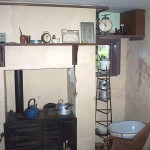

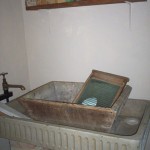
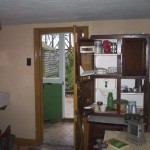

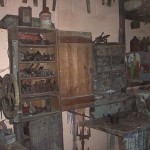
Chatham Historic Dockyard, Kent
After the Dockyard closed as a military base, the boring parts were cleared and re-developed, while the historic bits were conserved and opened as a large-scale museum. Today, as well as interior displays, the visitor can explore a Victorian warship, a WWII destroyer, and a submarine. Inside various buildings is an audio-visual recreation of the sailing Navy, a collection of naval hardware inside a wooden shed which is an exhibit in itself, etc etc. The long rope-making building is still in use. There are many historic buildings on site (not all open). Items from the Tudor navy to the 20th century are on site. Currently (Sept. 2011) components of the dismantled and somewhat charred “Cutty Sark” can also be seen at Chatham. On some days, you will see a steam hauled dockyard train trundling around.
There is a lot to see, and visitors should be aware that it takes some time just to walk from one end of the site to the other. My favourite items were the beautiful Victorian warship, HMS Gannet, the destroyer HMS Cavalier, and the great shed with the complex timber roof, housing a collection of anything from boats to boilers.
(HMS Gannet survived because the hulk was used as a floating Gulag for hapless sea cadets, who were subjected to a regime that today would be considered too harsh even for juvenile delinquents.) Outside the entry booth for the submarine, HMS Ocelot, is a plywood board with a large hole in it, and a sign suggesting that fatties should try climbing through it before proceeding further :-).
Admission prices aren’t particularly cheap, but this is a first-rate museum and the standard price covers a year’s re-admission, which is just as well as there is too much to see in one day. On entry, you will probably be handed notices and invites for timed events, and you could start by making your way to those, and having a preview of what’s en route, bearing in mind that walking to the far end will take about 20 mins even if you don’t linger. Thanks to demolition, there is plenty of car and coach parking. If you have time on your hands after a 2nd visit, the Royal Engineers’ military museum is in the town.
Torre Abbey, Torquay, Devon
There was originally an Abbey of the Premonstratensian Order here, but after the Dissolution of the monasteries, the remains of the buildings were converted into a large rambling house, owned for centuries by the Cary family. The Abbey, by now largely Georgian in character, was purchased by the local council in 1930 for use as an art gallery. The building is said to be divided into 122 rooms, rambling over 20 different levels and with 265 steps. However, in recent years the building was found to be in need of urgent major repairs, and was closed for a time, re-opening in 2008.
Today, the Abbey houses an enlarged art collection, including Pre-Raphaelite paintings by Holman Hunt and Edward Burne-Jones, and sculpture by Frederick Thrupp. In the gardens are some abbey ruins and a hothouse.
Adjacent to the house is the historic Spanish Barn.
The abbey is well worth a visit, both as a historic house and as an art gallery. One can get lost wandering around a large number of rooms at various different levels.
It is possible to visit Torre Abbey by train, as it is an easy walk from Torbay station.
Revisited May 2022

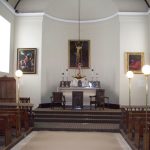
Lakeland Motor Museum, Cumbria
I visited this in its previous incarnation at Holker Hall, and recollect that there was a lot of it, and the exhibits were very interesting.
Overbeck’s, Devon
National Trust.
This is a museum of curiousities, set in an exotic semi-tropical garden. The last owner of the house, scientist and inventor Otto Overbeck, filled the house with his collections. There is a cabinet devoted to his inventions, which include an electrical “Rejuvenator”, designed to inject new life into the old and tired by passing electricity through the body. Also in the museum is a “Polyphon” a music box using large sheet steel disks, which plays music encoded as punched holes, also display photographs of various shipwrecks, and under the stairs a collection of dolls’ houses. The garden has some very steep slopes, and views over coastline and estuary.
This isn’t the easiest place to get to, as the roads leading to it are single-track, steep and twisty, and not suited for anything bigger than a minibus. There is a small car park near the house, for visitors, and if it’s full, finding alternative parking could be troublesome. If you are feeling really fit, it’s possible to park at East Soar and walk up (2 miles), or walk up from the ferry (1/2 mile). The NT handbook cautions drivers against paying too much attention to one’s sat-nav and advises following the brown signs from Marlborough towards Salcombe. As I recall, it was steep and narrow the direct way and steep and twisty by the brown sign route, neither an easy drive.
Kelmarsh Hall, Northants.
 Private (HHA)
Private (HHA)
The house was built in the 1730’s by virtuoso architect James Gibbs, and is a very attractive red-brick building of symmetrical and reticent design. The present interior decoration owes much to society decorator Nancy Lancaster, who lived at the house. Ground floor and first floor rooms can be viewed. In the basement, various staff and service rooms, and the modern heating plant can be seen. The basement area was opened for visitors in 2022.
Outside, behind the house are extensive gardens, serpentine lake and grassland. Do not miss the triangular walled garden with its fine displays of flowers (in season) and its greenhouses. For the children, there are some fairies to be found in the Wilderness area.
The house and contents are well worth a visit, and the gardens are also a popular attraction. The house is open on Tuesdays and Wednesdays only, but the gardens are open additionally on Thursday and Sunday. It might be wise to arrive in good time if you want to see everything.
Disabled visitors should inquire about the lifts, noting that the entrance to the ground floor, at the side of the main block, involves a substantial flight of steps, and there is a long flight of steps up to the first floor. I noted a video show on the ground floor showing the treasures on the first floor.
Also note the somewhat confusing arrangements in the visitor reception centre, where the reception also takes the payments for guidebooks and other knick-knacks, and the tearoom is at one side of reception while the till and counter is on the other side.
Kelmarsh is no longer associated with the Croome furniture collection.
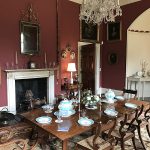

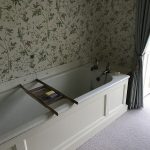


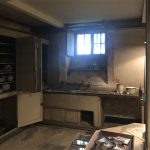




Finch Foundry, Devon

(National Trust)
This is the last remaining water-powered forge in England. The buildings and workshops have been preserved and the machinery is in working order. There are hourly demonstrations and tours, when you can see the waterwheels driving the tilt hammer and grindstone.
Upstairs is a small museum giving the history of the forge. In the grounds are a pleasant garden and a teashop. A Quaker cemetery adjoins the site. From the site one can take a circular riverside walk of about a mile and a half.
An interesting site, worth a visit.
Access to the car park is narrow, with a height restriction.

